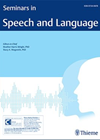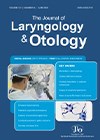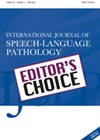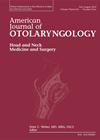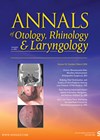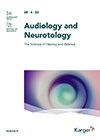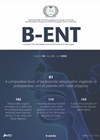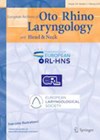
Journal Reviews
The hidden dementia in motor neurone disease
It is now well recognised that people with motor neurone disease (also known as amyotrophic lateral sclerosis) are at risk of developing frontotemporal dementia. It can be difficult to recognise the symptoms of cognitive decline in this group due to...
An effective treatment for post Covid-19 smell loss?
It is well understood that calcium levels in the nasal mucous affect the ability to smell, with higher levels having a negative impact, and some studies have shown increased calcium levels in patients suffering with Covid-19-related olfactory dysfunction. Calcium chelating...
Impact of Covid-19 on secretory otitis media (SOM) in terms of rate of intervention, effusion detected intraoperatively and seasonal variation
It is widely known that secretory otitis media (SOM) has seasonal variations. In well-judged cases, there is middle ear effusion found at the time of surgery. In this retrospective study, the authors have tried to assess if Covid-19 changed these...
Storytelling is good for your memory
Mild cognitive impairment (MCI) presents a challenging frontier in healthcare due to the limited availability of effective drugs. Despite its prevalence and potential progression to dementia, there remains a notable gap in pharmacological interventions targeting MCI. This month’s Editors’ Choice...
Chronic rhinosinusitis – a pre-malignant condition?
Nasopharyngeal carcinoma (NPC) is a relatively uncommon diagnosis in the West but is prevalent in Southeast Asia. Several factors have been established to be associated with a higher risk of developing NPC, including salted fish consumption, smoking, alcohol, and Epstein...
Long-term results for dupilumab are very promising!
Eosinophilic chronic rhinosinusitis (eCRS) is complicated by frequent early and aggressive recurrence of polyps after both medical and surgical treatment regimes. Dupilumab is an anti-IL-4/IL-3 receptor monoclonal antibody and has been previously studied in the SINUS-52 study, with an observation...
Is GERD linked to CRS?
We are all well aware that both chronic rhinosinusitis and reflux are prevalent in our populations. This meta-analysis looked at 25 studies investigating the association between GERD, LPR and CRS, therefore evaluating more than 117,000 patients. The results are fascinating...
THRIVE: redefining airway management in endoscopic oesophageal surgery
Transnasal humidified rapid insufflation ventilatory exchange (THRIVE) is no longer just a tool to help anaesthetists secure a difficult airway. Thanks to the work of authors like Yang and colleagues, it is being revolutionised to provide apnoeic oxygenation during endoscopic...
Vascular disease and sudden sensorineural hearing loss
Oussoren et al performed a systematic review and meta-analyses of current literature on the above topic: specifically, cardiovascular risk factors for developing idiopathic sudden sensorineural hearing loss (iSSNHL), the presence of white matter hyperintensities in patients with iSSNHL and the...
Septal perforation healing
This Turkish animal-based study looked at the healing properties of Hypericum Oleum (HO, or St John’s wort) and Triticum vulgare (TV, or wheat germ oil) on nasal septal perforations in rats. Both HO and TV have wound healing properties and...
COVID-19 and dysphagia in critically ill patients: a reflection of some findings
Dysphagia was a common occurrence in patients admitted to intensive care units (ITU) during the pandemic. This paper explores data from 26 ITUs over 12 months during 2020-2021. Findings from 235 patients admitted with Delta and subsequent Covid variants who...
Vestibular function preservation after minimally invasive paediatric cochlear implantation
This retrospective study analysed results in 24 paediatric patients with low-frequency residual hearing before and after minimally invasive cochlear implantation. The authors define minimally invasive cochlear implantation as a round window insertion of flexible Nucleus CI422, Nucleus CI522, MedEl Flex...

